Satellite Galaxies Live In The Same Plane As Their Hosts, Defying Dark Matter Predictions

But is this really a problem for the theory? Or is it physics to the rescue?
Dark matter is one of the most powerful, yet one of the most controversial, ideas to come about in modern physics. We see indisputable evidence that the normal matter present in the Universe, made up of protons, neutrons, and electrons, cannot explain the full suite of gravitational effects on their own. Adding an additional source of mass with particular properties, i.e., dark matter, brings almost all of gravitation’s predictions in line with what we see. Yet one of dark matter’s predictions is that small, dwarf, satellite galaxies should form in a large halo around large galaxies. Yet around the Milky Way, Andromeda, and now Centaurus A, they don’t live in a halo, but rather, a disk. The researchers doing the latest study claim this is a major challenge to the standard picture of cold dark matter (CDM) cosmology. But is it, really? Finding out requires an in-depth look.
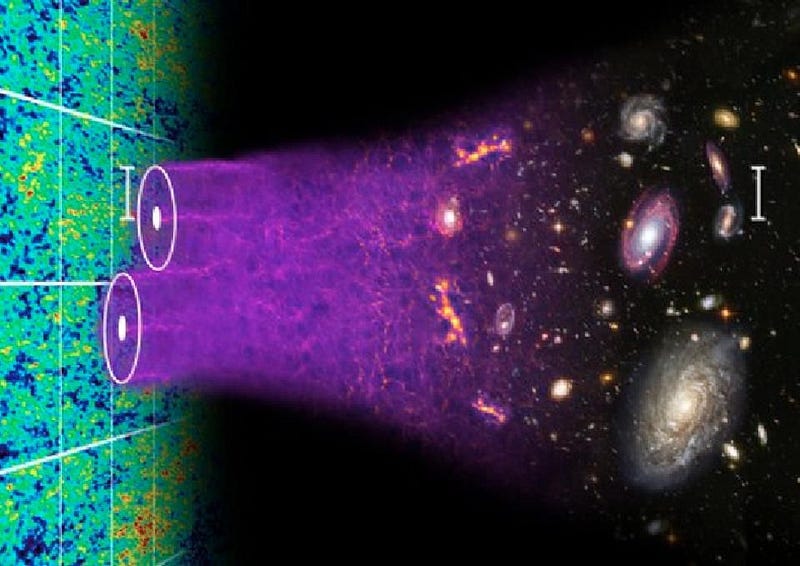
Whenever you have a theory that’s compelling, simple, solves a host of problems, but whose fundamental prediction can only be detected indirectly, it’s bound to have naysayers. Cosmic inflation, for example, explains the origin of our Universe, but only its leftover effects can be seen today. Dark energy explains the accelerated expansion of the Universe perfectly, but there’s no known way to probe its underlying cause. And dark matter, frustratingly, explains a whole suite of cosmological observations, from the dynamics of individual galaxies to the large-scale cosmic web to the fluctuations in the Big Bang’s leftover glow. But no one’s ever directly detected a dark matter particle. Arguably, no one’s even come close. Still, that doesn’t mean dark matter isn’t real; it means we have to be extremely careful in our analyses.

The satellite galaxy problem is a real conundrum, since there’s lots of intricate physics involved. When you run a dark matter simulation, it’s a universal feature that, over time, you build up large halos of dark matter that merge together, corresponding to the large spiral and elliptical galaxies we know today. But surrounding them are smaller sub-halos, which appear, in simulations, at all orientations around the larger galaxy. In practice, though, the small, satellite galaxies we actually see show up in a plane: the same orbital plane that the main galaxy’s disk is found in.
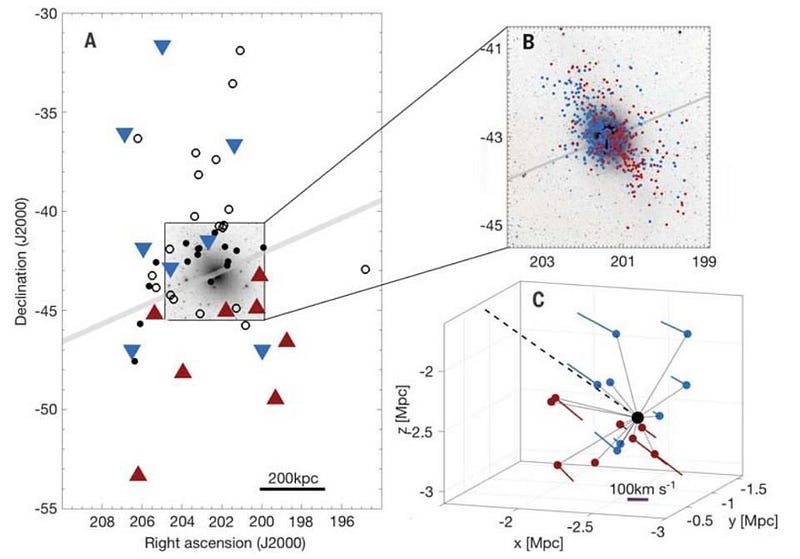
Moreover, while the naive expectation is that these dwarf galaxies will also exhibit random motions, what we observe shows significant evidence that these satellites are co-rotating with the main galaxy itself. This was found first for the Milky Way and Andromeda, and new research indicates this is true for Centaurus A as well, with 14 of the 16 discovered satellite galaxies appearing to co-rotate along with the central galaxy.
Either something is hiding these halos, something is wrong with the simulations, or something is not fully accounted for by dark matter. Let’s look at each of the possibilities.
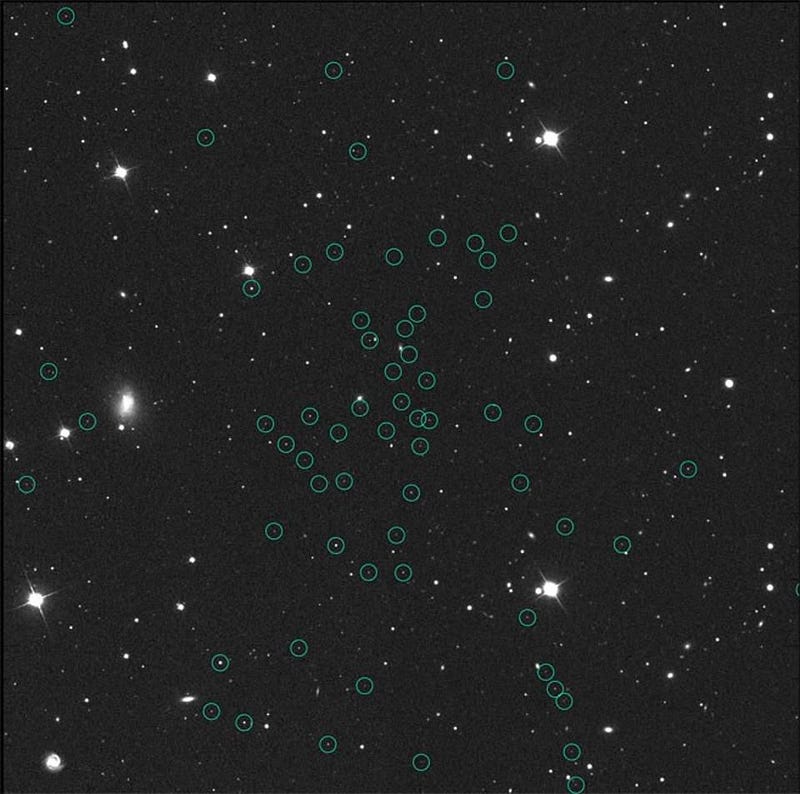
1.) These halos are real, but the out-of-disk dwarf satellites are too hard to see. The missing satellite problem is a longstanding one in cosmology, as simulations of CDM have long indicated far more dwarf galaxies around large galaxies than we have discovered. Recently, significant numbers of ultra-faint dwarf galaxies have been found, mostly nearby. They’re fainter than even the open star clusters found in the Milky Way, with many containing only hundreds of stars, despite dark matter masses in the hundreds of thousands of solar masses. However, this doesn’t fully explain the orientation problem, as the plane appears to be real.
Furthermore, the argument that these dwarfs would be hidden should apply only to the Milky Way, since only its plane will obscure satellites. The observation of Centaurus A and Andromeda’s satellites appear to lay this to rest. There are arguments about whether all of the observed planes are dynamically stable over long timescales, but it doesn’t appear that the small, missing dwarfs can explain the unexpected planar alignment.
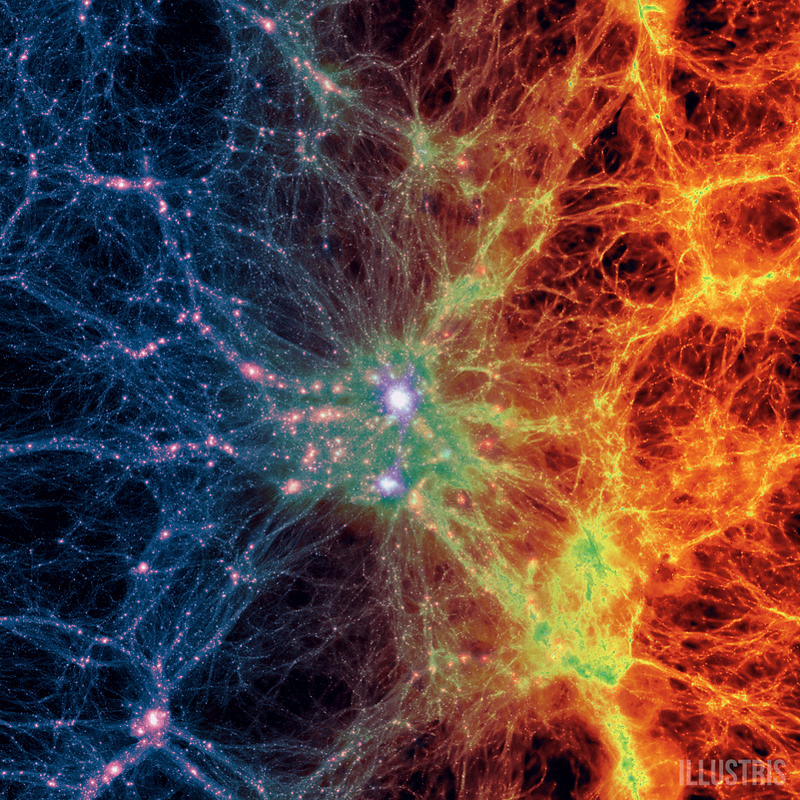
2.) The simulations that predict a halo-like distribution of satellites are flawed. This is a potential explanation that should be taken very seriously. There are a very large number of processes at play in galactic evolution, including mergers of smaller galaxies to build up the larger ones, infalling matter onto these galaxies, and the flows of dark and normal matter along cosmic filaments. These filaments are known to function as a sort of galactic highway, funneling small galaxies onto the larger ones over billions of years. In addition, there are feedback effects from star-formation, and the interplay of gas, plasma, and radiation may play a role that isn’t well accounted for in standard CDM simulations. The halo-like distribution may not be a generic feature, after all, when all of these other physical effects are accounted for.
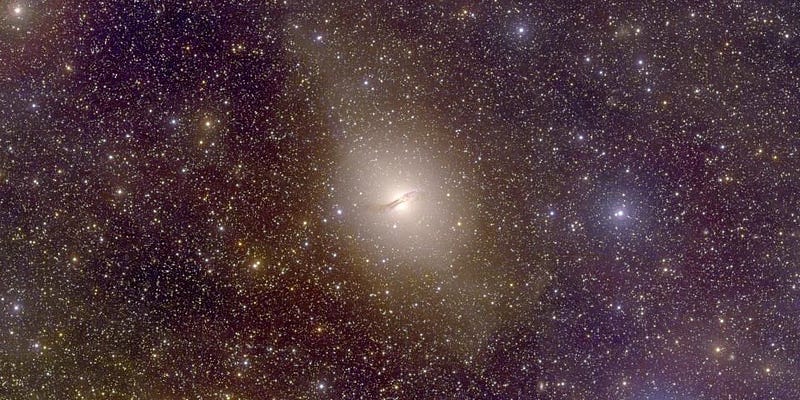
3.) Something is wrong with the very idea of dark matter. The relative importance of the physical effects listed above, however, is hotly debated. As the authors of the new paper themselves note: “Although we find that the kinematics of the [Centaurus] A satellites are unlikely to occur by chance, this does not immediately allow us to draw conclusions about its agreement with predictions from [cold dark matter] cosmology.” The most modern simulations do fail to reproduce what’s observed around galaxies like Centaurus A, the Milky Way, and Andromeda, and the authors of the current paper assert that this tension, therefore, favors an alternative to the dark matter explanation. It is eminently possible, as suggested by the authors, that these satellites emerge from a historic major merger between two comparably-sized galaxies. This, too, is a much-debated, but interesting, possibility.
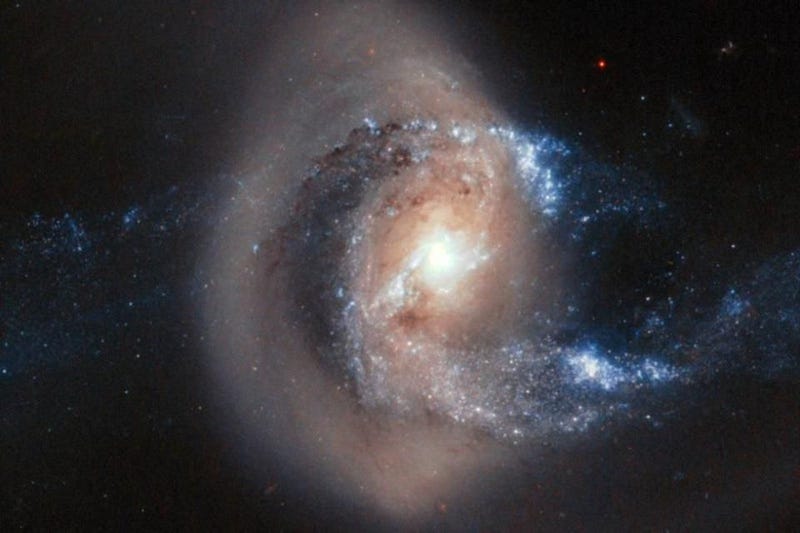
Each perspective has some evidence to support it, but it’s quite clear that the prediction of a halo-like distribution of all but the very smallest satellites is not what the Universe gives us. For three large galaxies, now — the Milky Way, Andromeda, and Centaurus A — the observational facts appear to show that dwarf satellite galaxies appear in a plane surrounding these large ones. Furthermore, there’s suggestive evidence that these dwarf galaxies are in motion along with the large galaxy’s rotation. However, when you look at the nearby Universe, there’s an important factor at play: there are local flows of matter, both normal and dark, onto these galaxies as well. If there’s a preferential direction to how matter falls into these galaxies, there ought to be a preferential direction to the dwarf satellites that become bound to them.

In 2015, a team led by Noam Libeskind discovered this exact effect. “This is the first time we have had observational verification that large filamentary super highways are channeling dwarf galaxies across the cosmos along magnificent bridges of dark matter,” Libeskind said at the time. Now, nearly three years later, the picture is confirmed with better data at even greater precision. There’s no additional indications that dark matter is more-or-less likely than it was previously from this new study. Nevertheless, this current team is more skeptical about CDM overall, and more inclined to look for alternative explanations, such as major mergers, for the origin of the in-plane satellites.
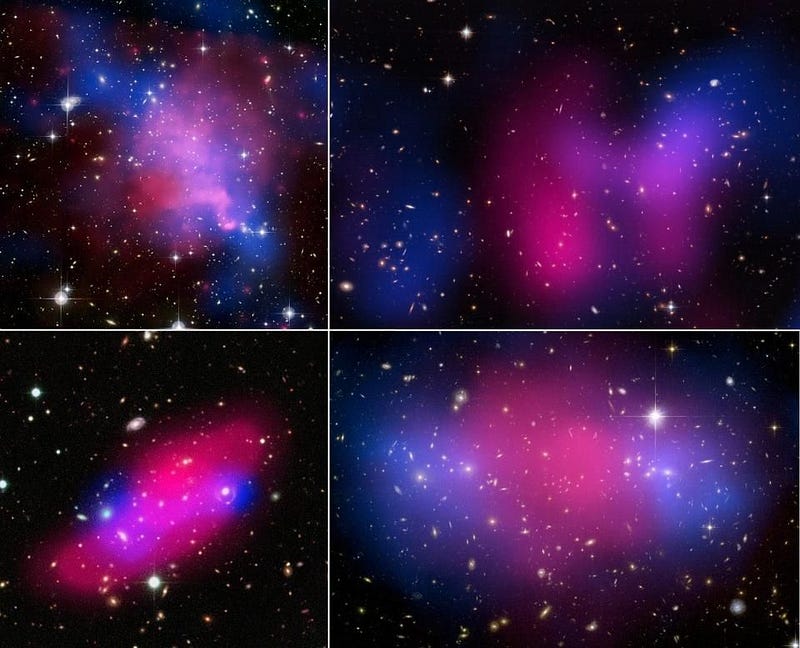
In an interview with study coauthor Marcel Pawlowski of the University of California, Irvine, he related the following:
“On large scales, [CDM] is really successful. I think that, in general, we should become more diverse in our approaches. MOND, on the other hand, is very successful at predicting small scale dynamics. I’m really excited about the possibilities that combine the successes of both. Superfluid dark matter is one such interesting possibility, which gives you the large-scale successes of dark matter, but also reproduces a MOND effect on small scales. I think we should encourage and investigate these possibilities further. I don’t think we should give up on anything, but I do think the field should pursue these alternative approaches.”
However, just as the discovery that heavy elements were made in stars, rather than the early Universe, didn’t invalidate the Big Bang, it’s possible that two competing perspectives are both correct. It’s possible that baryonic, galaxy-making matter flows onto galaxies via the filamentary pathways, that CDM is responsible for the large-scale structure and features of the Universe, and also that these dwarf satellites arise from the major mergers themselves, not from the predictions of CDM. If this were the case, however, we’d fully expect the “splashback” galaxies to be dominated by baryons, not by dark matter. Interestingly, dwarf satellite galaxies show a mix: in some cases, the results agree with the prediction of CDM halos, while in others, CDM predictions appear to grossly overestimate the dark matter mass. A unified model, accounting for the full suite of observations, still eludes us.
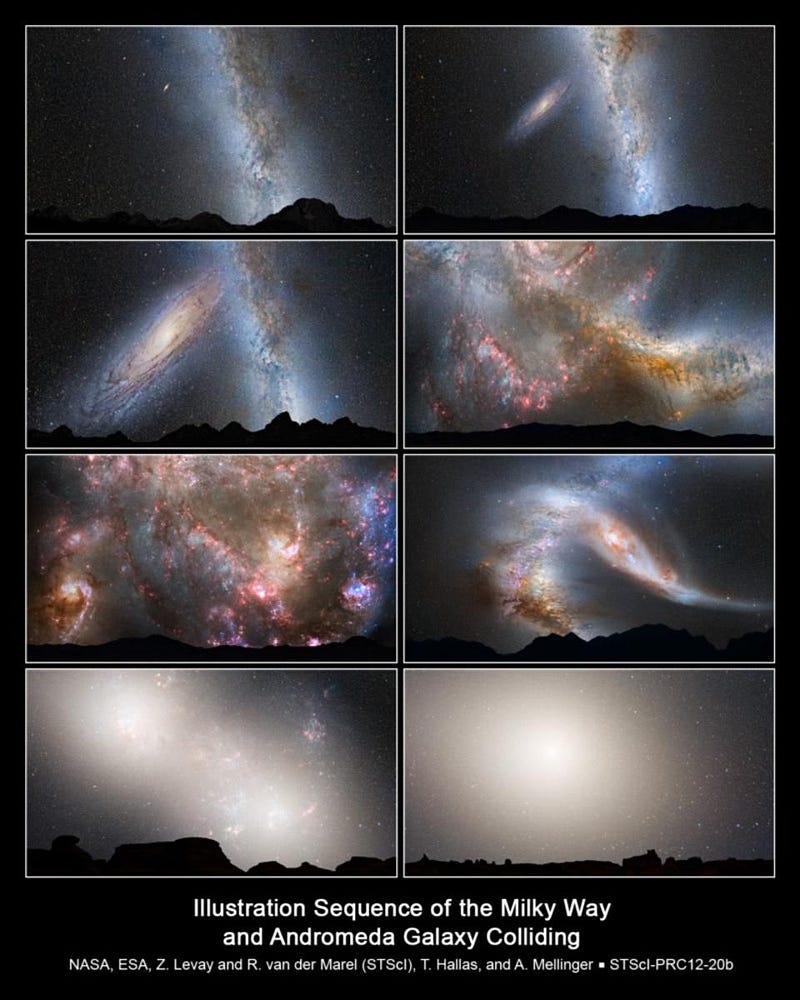
So who is correct? As simulations become better at adding in additional dynamics such as dark matter/radiation/normal matter interactions, star formation feedback, local peculiar velocity effects and more, they do match better with the observations, but still not perfectly and certainly not universally. On the other hand, alternatives to dark matter still suffer the same failures when attempting to reproduce the cosmic web, the cosmic microwave background, or the dynamics of colliding galaxy clusters. However, it’s important to keep an open mind so long as the smoking-gun evidence for CDM is missing, and also remember that this is a puzzle that may say more about galaxy evolution and mergers than it does about dark matter. As Michael Boylan-Kolchin says, “The results may lead to either a better understanding of galaxy formation within the [cold dark matter] model or a push to overthrow its underlying assumptions.”
Due to the full suite of its successes on all scales, dark matter is here to stay, at least for the time being. However, the formation and evolution of galaxies, particularly on smaller and smaller scales, will remain an active area of research with many unsolved puzzles for years to come.
Ethan Siegel is the author of Beyond the Galaxy and Treknology. You can pre-order his third book, currently in development: the Encyclopaedia Cosmologica.





